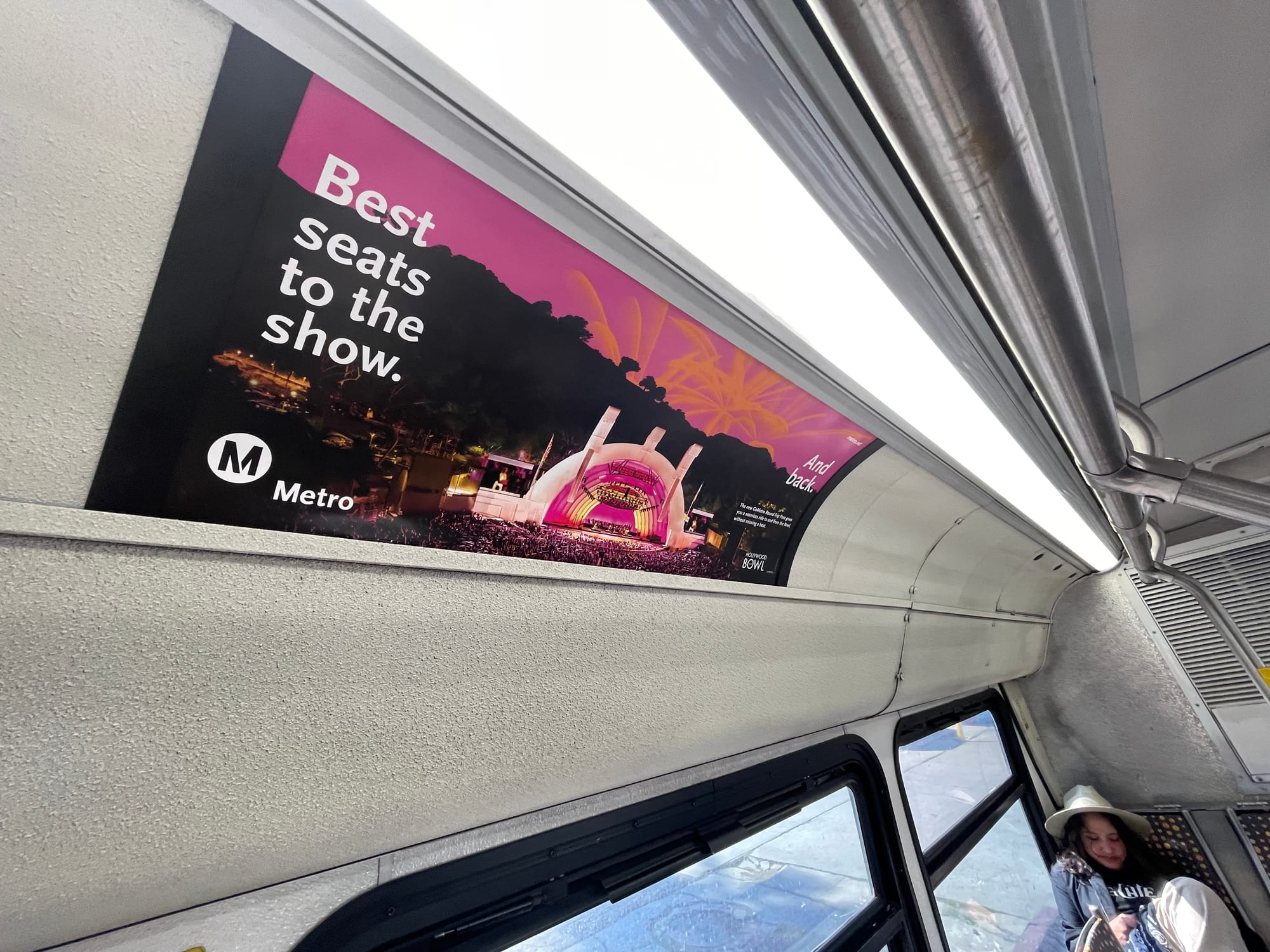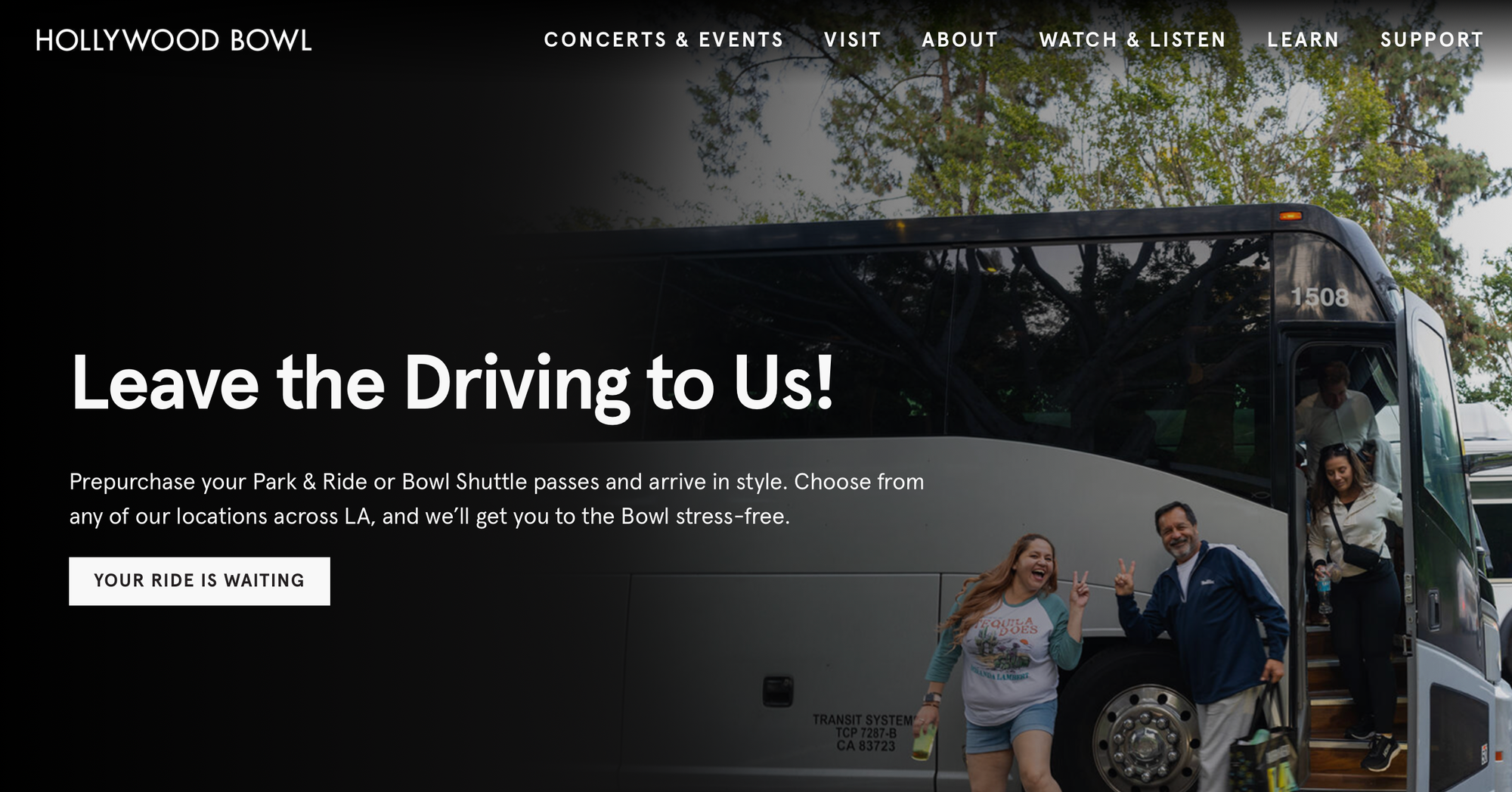Torched Talks with Paralympian Candace Cable
A conversation on disability and megaevents on December 15
When the LA Phil season ended earlier this month, the Hollywood Bowl reported that the number of visitors who used the shuttles and park-and-ride buses this year had increased to an astounding 36 percent

Everyone knows the absolute best way to get to Dodger Stadium is on the Dodger Stadium Express shuttle from Union Station. It's free with your ticket, travels in dedicated lanes on Sunset Boulevard, and drops you steps from your first beer in a vast 16,000-space parking lot that makes you feel extremely smug about your choices. But once the stadium erupts into post-game gridlock, the wait to ride back to Union Station can be so excruciatingly long that some people start hoofing it instead. Which is what Metro recommended during last weekend's playoffs when it circulated a video instructing riders to walk one mile downhill to the A line station in Chinatown. While I've done this walk voluntarily many times, it simply isn't acceptable to send transit-users on an impromptu tour of LA's dangerous and inaccessible sidewalk infrastructure when they thought they'd get a ride back to where they started. And it certainly won't be the plan for people streaming out of our "car-free" baseball finals in 2028. Should the Dodgers ever be bold enough to attempt it, the solution to their traffic troubles is found right here in LA, at a magical place where transit is actually prioritized — and this year, got more drivers off the road than ever.
One year ago, an excellent column by Los Angeles Times sports reporter Bill Shaikin urged Dodger Stadium to think more like the Hollywood Bowl, where about a quarter of 2023 season ticketholders arrived to the 17,500-seat venue without cars. The secret? The Bowl famously buses ticketholders from 14 park-and-ride locations all over the region, plus four offsite shuttle lots located at the LA Zoo, Burbank Metrolink station, and two nearby B line stations. Last season, an incredible 29 percent of the audience got to the Bowl using these modes. (For comparison, only about 5 percent of Dodger Stadium's 56,000 fans get there on the Dodger Stadium Express.)
It's all very impressive. But since Shaikin's story, the Bowl has stepped up its game. This season, to further discourage driving, the Bowl reconfigured its Uber and Lyft lot and eliminated hundreds of parking spaces to create more room for transit options. A new bundled Metro ticket was offered along with a free transfer to a B line shuttle. Lease events continue through the fall, but when the LA Phil season ended earlier this month, the Hollywood Bowl reported that the number of visitors who used the shuttles and park-and-ride buses this year had increased to an astounding 36 percent.

That's not all, the release continues, "thanks to the increase in bus ridership, auto traffic in the Hollywood Hills and surrounding neighborhoods has decreased by approximately 115,400 vehicles through this point in the season."
As someone who lived nearby for three years and experienced the extensive community outreach the Hollywood Bowl does to assuage the fears of nearby driveway-owners, I would say that's a win-win for everyone. "The feedback has definitely been positive," says the LA Phil's chief operating officer Daniel Song.
Granted, the Hollywood Bowl had to get creative because it's working with spatial constraints: very angry neighbors, very little parking. But what's interesting about the Hollywood Bowl is that it's about the same distance from a Metro station as Dodger Stadium. And it, too, is uphill. Hollywood's sidewalks are a little better; and yes, fans should really be able to walk, roll, or bike easily to and from Dodger Stadium — and to and from Elysian Park for that matter — something many smart people have been advocating for going on decades now. But no one is suggesting that the Hollywood Bowl should build, say, a one-mile aerial gondola from the Hollywood & Highland station. The fact that anyone is even considering spending $500 million to "fix" Dodger Stadium traffic is absolutely wild when the Hollywood Bowl is over here demonstrating how easily the problem is solved with the humble bus.
Besides, as the Hollywood Bowl's data shows, people who ride buses might not want to necessarily end up at the nearest Metro station after a game. They want to get closer to home. Despite being close to two B line stations, the Hollywood Bowl says its most popular shuttle line, by far, is the shuttle from the LA Zoo. What Dodger fans need are not just more shuttles to Union Station, but dozens more bus routes fanning out throughout the region, getting people directly to the game — and back.

In his LA Times column from last year, Shaikin asked Dodgers president Stan Kasten about trying a Bowl-style park-and-ride system. "We have looked into it," Kasten says, noting that the challenge is finding enough offsite parking lots. But in notoriously overparked LA that actually seems... pretty easy? Just cross-referencing the Bowl's park-and-ride lot lists with Metro's voluminous garages at many of its stations seems more than sufficient. Plus, if more venues like Dodger Stadium used the same park-and-ride locations as the Hollywood Bowl, people would start to associate these spots as the best places to catch a ride to any event. Metro already operates a second Dodger Stadium Express from the Harbor Gateway Transit Center in the South Bay that uses the J line's bus rapid transit lanes. Here's how to make LA true world champions and prep everyone for 2028: more people demanding more BRT to get to more sports all over the region — what a way to build constituency for bus infrastructure!
Actually, that was Kasten's last excuse for why the Dodgers can't do park-and-ride buses: the Dodger Stadium Express runs in bus-only lanes, he told Shaikin. “We wouldn't have dedicated lanes all over town."
Except, we would. In fact — we will. 🔥